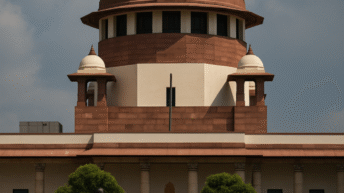
India has always sought a stable periphery, so as to stay laser-focused on its priority project: peace and prosperity for its 142-crore citizenry. As a status-quoist power with no territorial ambitions, it would also like to help replicate an ASEAN-like grouping in South Asia, an economic powerhouse under whose ambit cultural, trade, business, commerce and technology flows may reach a collaborative high.
India’s geopolitical chessboard however tells a less promising story. To the three arms of the current Threat Pincer (China’s military deployment to the North, the terror trail and other challenges along the Western frontiers, and the growing presence of the People’s Liberation Army Navy, in the IOR to the South) we must now add a fourth in the form of an unstable, even inimical Bangladesh–Myanmar corridor and axis opposing Indian national and regional interests.
Bangladesh, while no longer East Pakistan, could be turning into a mirror image of Pakistan. Two deeply troubled and crisis-ridden countries, one on India’s East and another to the West, both upholding aggressively expansionist Islamism, are not a welcome prospect, especially if they have a common and powerful mentor – China, whose geopolitical project of a Unipolar Asia rhymes with that very Chinese metaphor, ‘there can be only one tiger on a hill.’ This also means that the Sino-Indian gridlock may play out as ‘a fight to the finish.’ We must remain alive to that possibility and create a re-invigorated security system in the North East that espouses a wider, long-term worldview and provides fail-proof deterrence.
The recent turmoil in Bangladesh leading to the exit of Sheikh Hasina, may also be synonymous with the return of the Jamaat-e-Islami, Al Shams, Al Badr, the Islamic Chhatra Shibir (ICS), the BNP, ISI, all amounting to Pakistani influence under a Chinese shadow. While we may hope otherwise, BNP ideologues do look at the South Asian region through a religious lens: they talk of Muslim, Hindu, and Buddhist majority countries and point to the danger of a Hindu-Indian hegemony. Shariat is the preferred jurisdiction for more than 80% of the Bangladeshis. The Bangladesh Army is no longer an institution that stands out for its secular credentials; its deep politicisation implies that it will be an instrument of the political regime in power. India also has an obligation to ensure the security of the Hindu population in Bangladesh (13.1 million, 7.95 % of the total population) through robust diplomatic outreach to the current regime in Dhaka, by helping the Hindu community organise better, socially and politically and by sorting out the bureaucratese associated with the CAA so as to allow the entry of those facing persecution as also by drawing plans for a ‘right to protect’ contingency.
In Myanmar, due to the success of Operations 1027 & 1111 (with military supplies and possible political orange-lighting from China), the battle lines between the military junta and the rebels are being violently re-drawn. Western sanctions have pushed the junta into Beijing’s arms and the latter is using the opportunity to seek a backdoor entry into the Indian Ocean through the deep-sea port at Kyaukphyu – a development that demands careful monitoring. Unless Chinese influence is checkmated, connectivity projects like the India-Myanmar-Thailand Trilateral Highway and the Kaladan Multi-Modal Transit Transport Project, linking India’s Northeast region to Southeast Asia, may be in jeopardy. China is one of Myanmar’s largest trading partners – the trade between the two countries is around $8.4 billion. Since the February 2021 coup, China has invested more than $113 million in Myanmar. The China-Myanmar Economic Corridor (rail & road links as also gas and oil pipelines) under the Belt and Road Initiative (BRI) is reflective of China’s deep penetration into Myanmar. The listening post on Myanmar’s Great Coco Island, a mere 55 km to the north of India’s Andaman and Nicobar Islands, could be used to monitor India’s maritime activities such as naval communications and movements, satellite launches, missile testing, et al. Since 2014-15, India has spent the equivalent of around $50 billion on infrastructure development in the Northeast, the Modi government has also concluded peace accords with several insurgent groups in the Northeast, including the Bodo Accord, the Bru-Reang Agreement, the Karbi Anglong Agreement and the recently concluded accord in Tripura. We need to secure such forward movement and progress through robust security initiatives.
The influx of refugees in the Northeast has complicated inter-community dynamics – the arrival of Chin and Kuki refugees from Myanmar has caused resentment among the Meiteis and the Nagas, thereby damaging the volatile social fabric of the region. Rebels from Myanmar have set up bases in Mizoram to aid their fight against the military junta. Myanmar’s drug cartels leverage their strong ethnic ties across the border to bolster drug trafficking in states like Arunachal Pradesh, Manipur, Mizoram, Tripura, Meghalaya and Nagaland. The profits generated in that trade oil the wheels of conflict. Encouraged by the success of their military wares in their fight against the military junta in Myanmar, the Myanmar resistance is now exporting its ideas and weapons, such as drones, to hotspots in Manipur.
The geopolitics driving developments in the region is significant too – Sheikh Hasina’s apparent refusal to cede St. Martin’s Island to the USA, US sanctions on Awami League (AL) leaders and Bangladesh’s’ elite paramilitary force, the Rapid Action Battalion (RAB), Sheikh Hasina’s public statement accusing the US of wanting to carve out a Christian state from parts of Bangladesh, Myanmar, and another country may have precipitated the tumultuous turn of events in Dhaka. The lack of appropriate protocol and less than promised financial assistance, during her visit to Beijing in July 2024, causing her to cut short her visit, appears to have triggered the uprising at home. Whatever the truth may be, the fact that the USA and China got the better of Indian statecraft, in a country so critical to our security interests, must result in deep introspection and the initiation of corrective measures.
In aggregate terms, the threats emanating from the Myanmar-Bangladesh theatre constitute a new national security reality, one that merits a brand new, strategic-military response. We need to grow our intelligence, and digital-technological capabilities so as not to be unpleasantly taken by surprise in our ‘near abroad’ again in the future. Some of these responsibilities may well fall on the shoulders of the prospective Eastern Theatre Commander who will have to shift the gaze of the military from a predominantly internal, counter-insurgency focus to a long-range quasi-diplomatic sweep extending across the borders and informing an integrated strategy to secure a stable periphery.
Developments in Bangladesh-Myanmar also point to the growing burden of responsibilities on Indian statecraft which include stabilising the South Asian periphery while concurrently attempting to break out of the South Asian box to fulfill India’s global aspirations. We must take setbacks like the one in Bangladesh in our stride – they should not deter us from plotting the country’s long-term rise. Indeed as we enter the big power competition, we should expect many more such tests of our strategic mettle. The Vishwa Bandhu Yatra is not going to be a breezy promenade.






Chinta of North East must be addressed on Priority if one wishes to have Pomegranate while on a promenade or else it is Pomo grenade. Very well articulated.
The role of US and China in Bangladesh is not clearly understood and is hazy. Few state the deep state of US behind the present crisis in Bangladesh whereas the writer has mentioned China. Both these powers are in vying for control and being adversary will not like to coopt the other in this.
There are enough muddy waters in this episode and clarity is not forthcoming.
Sir,
Compliments for a well researched article. My observations-
1. In today’s era of space age and satellites, military value or relevance of a listening out post on Myanmar’s great Coco Island needs a relook. We tend to look at it using military logic and standards of a bygone era.
2. The logic that US was not happy with Hasina for not yielding on their proposal for St Martin Island also needs a reconsideration. With its bases in Japan, South Korea and Philippines and its
excellent relations with Thailand does US really need additional OPs? Desire by USA to establish a Christian state in that part of geography also is too far fetched.
3. Hasina was known for her stubborn anti-Islamist stand that gels well with the US worldview on the subject. With Hasina gone, the forces that are emerging in Dhaka will give a boost to anti-US thinking and actions in all spheres of its political, economic and security activities. China and Pakistan must be delighted with the turn of events. But strategically it makes no sense from US point of view to get rid of Hasina. Though she was for all practical purposes a dictator, US knows how to do business with this tribe. The BNP Jamait combination will be not only rabidly anti-India as well as anti-US but will be of little use to US in countering Chinese influence in Myanmar.
4. US sanctions on AL leaders, RAB etc are in keeping with the unidirectional worldview of the Democratic fringe that given an opportunity will like to sanction Modi for his Kashmir policies.
Brilliantly espoused.
Insightfully detailed